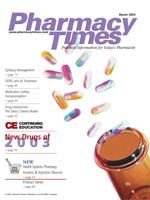Publication
Article
Pharmacy Times
Sources of Error in Drug Interactions: The Swiss Cheese Model
The process of maximizing the benefits and minimizing the risks of drug therapy is complex, and there are many steps in the process where errors can occur. Although the system has safeguards to avoid unwanted outcomes, none of these is foolproof. This situation is especially true regarding the prevention of adverse drug?drug interactions.
Because adverse drug interactions are almost completely preventable, it is important to identify the steps at which that prevention can take place. If one analyzes an individual case report in which a patient suffered adverse consequences from a drug?drug interaction, it is almost always possible to trace the process back to a place where someone ?eg, the prescriber, pharmacist, nurse, or patient?could have taken action to prevent it.
James Reason, a British psychology professor, has developed a useful construct to explain the sources of adverse outcomes in complex systems, using the "Swiss cheese model."1 Figure 1 represents the adaptation of the Swiss cheese model to the problem of drug interactions, in which the defenses against adverse outcomes from drug interactions are represented by a series of slices of Swiss cheese. Ideally, the defenses would be completely intact, like a slice of Cheddar cheese, so that an initiating event could not traverse to the point of producing an adverse drug reaction (ADR). Perfect systems do not exist, however, and the holes in the Swiss cheese represent gaps in the defenses. Yet, unlike actual Swiss cheese, these holes are dynamic; they open, close, and change location as the individual defenses change over time.
Although the Swiss cheese model has been used for many types of adverse outcomes (eg, industrial accidents, plane crashes), for our purposes we will assume that the initiating event is a drug interaction: Drug A + Drug B (Figure 2). Drug?drug interactions often do not result in an adverse outcome, because one of the defenses stops the trajectory of the hazard arrow before an ADR can occur. Some of the defenses are intentional and active measures taken by the health professionals? such as the prescriber or pharmacist searching for possible drug interactions between a new drug being considered for use in a patient and the medications the patient is already taking. Other defenses arise accidentally, however? as when a patient's pharmacogenetics renders him or her resistant to the adverse outcome (as in Figure 2), or when the drug is not given in a sufficient dose and/or duration to produce an adverse drug interaction.
Occasionally, however, the holes in the defenses line up, and an adverse outcome occurs (Figure 3). For most drug interactions, the holes only occasionally line up, and this fact can lead health care providers to conclude that the drug interaction in question is not clinically important. A good example would be the combination of an angiotensin-converting enzyme inhibitor and a potassium-sparing diuretic (see Pharmacy Times, January 2004, Drug Interactions). The combination is frequently used with good results, but an occasional predisposed patient develops life-threatening hyperkalemia.
At first blush, one might assume that pharmacists need only address the "Pharmacist's Knowledge" part of the defense. Yet, depending on the specific drug interaction under consideration, pharmacists generally can address every one of the defenses shown. Pharmacists can provide information for prescribers; can help improve computer systems; can assess whether specific patients have risk factors; can determine whether the patient's pharmacogenetics increases or decreases the risk (at least when pharmacogenetic profiles of patients become routine); can assess whether the drug is to be administered in a way that would mitigate the interaction or make it more dangerous; can educate the patient in ways to minimize the risk of an adverse outcome; and can help monitor for signs and symptoms that may represent evidence of an adverse drug interaction.
Because it is not possible to "seal off" the holes completely in any one of the individual defenses, prevention of adverse drug interactions?at least for the present?requires a systemic approach to try to fortify all of the defenses. Pharmacists are in an ideal position to play a pivotal role in this endeavor.
For a list of references, send a stamped, self-addressed envelope to: References Department, Attn. D. Ryan, Pharmacy Times, 241 Forsgate Drive, Jamesburg, NJ 08831; or send an e-mail request to: dryan@mwc.com.







